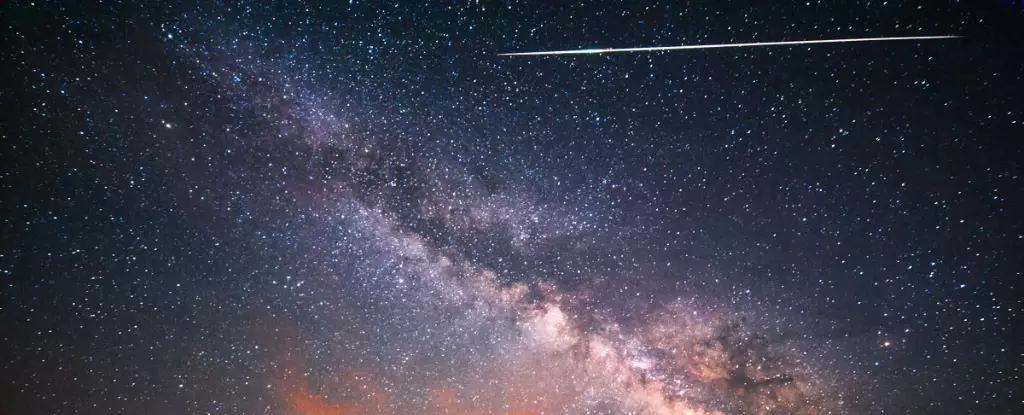Witnessing a meteor shower is a breathtaking experience that reminds us of the vastness of the universe and the beauty of celestial events. Meteors, commonly known as shooting stars, can be observed on any given night, but certain nights offer a more spectacular display than others. As Earth orbits around the Sun, it encounters streams of dust and debris from comets and asteroids, creating what is known as a meteor shower. One such event is the Eta Aquariid meteor shower, which occurs annually as Earth passes through the debris stream left behind by Halley’s comet.
This year, skywatchers are in for a treat as the Eta Aquariid meteor shower coincides with a new Moon, providing exceptionally dark skies in the hours before dawn. This perfect scenario allows for optimal viewing conditions, with the promise of fragments from the famous comet raining down on Earth. Scientists even suggest that this year’s shower may be more active than usual, offering a potential increase in meteor sightings.
Halley’s comet, officially known as 1P/Halley, orbits the Sun approximately every 76 years, leaving behind a trail of dust and gas with each pass through the inner Solar System. Over thousands of years, this debris has spread throughout space, forming a broad swath along the comet’s orbit. Earth intersects this debris field twice a year, resulting in two distinct meteor showers. The Eta Aquariid meteor shower occurs in early May, peaking around May 6 as Earth passes through the densest part of the debris stream.
The Eta Aquariids are considered one of the best meteor showers of the year, although they are less well-known due to being primarily visible from the southern hemisphere. Southern observers, especially those in Australia, have the advantage of viewing the radiant point in the constellation Aquarius rising in the predawn sky. This timing allows for several hours of observation before the onset of morning twilight, maximizing the chances of witnessing this celestial spectacle.
When watching the Eta Aquariids, it is important to note that the rate of meteors varies throughout the night. The number of visible meteors typically increases as the radiant point rises higher in the sky. Earthgrazing meteors, which streak across the atmosphere at shallow angles, can be especially captivating to observe. During the peak of the Eta Aquariid meteor shower, skywatchers may see anywhere from 20 to 30 meteors per hour, making it a prime opportunity for meteor spotting.
As researchers continue to study the behavior of the Eta Aquariids, there are tantalizing hints that this year’s meteor shower may exhibit enhanced rates compared to previous years. Some scientists speculate that the 2024 Eta Aquariid meteor shower could be the most robust of the entire 21st century. However, predicting the exact activity of meteor showers is complex and uncertain, with some suggesting that this year’s event may proceed as usual. Despite these differing opinions, the 2024 Eta Aquariid meteor shower remains a compelling celestial event worth observing.
The Eta Aquariid meteor shower offers a mesmerizing display of natural fireworks that captivates observers in the southern hemisphere, particularly in Australia. With ideal viewing conditions and the peak falling on a holiday in certain regions, this year presents an exceptional opportunity to witness this cosmic extravaganza. Whether the shower displays enhanced rates or proceeds as expected, the beauty of the Eta Aquariids is sure to leave a lasting impression on those who take the time to gaze up at the night sky.


Leave a Reply